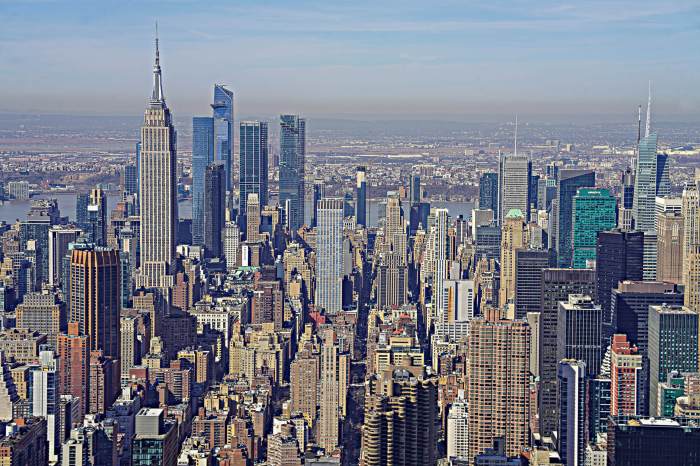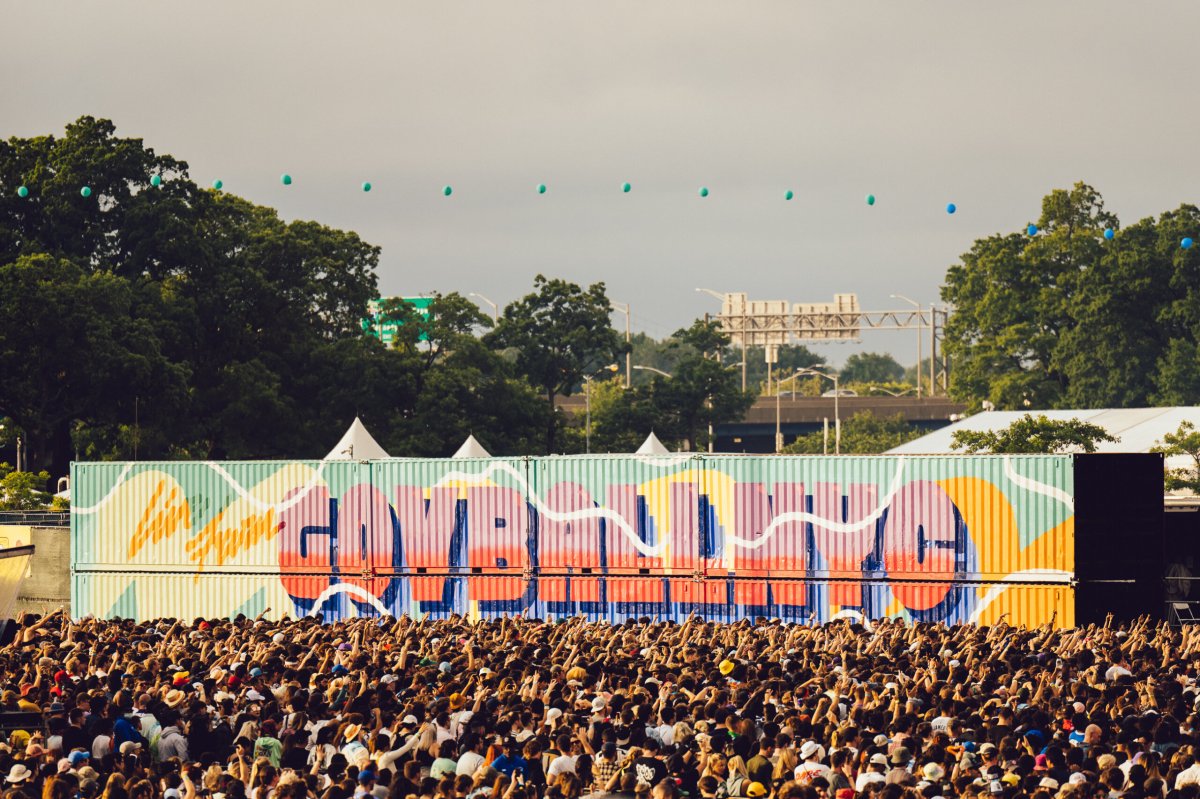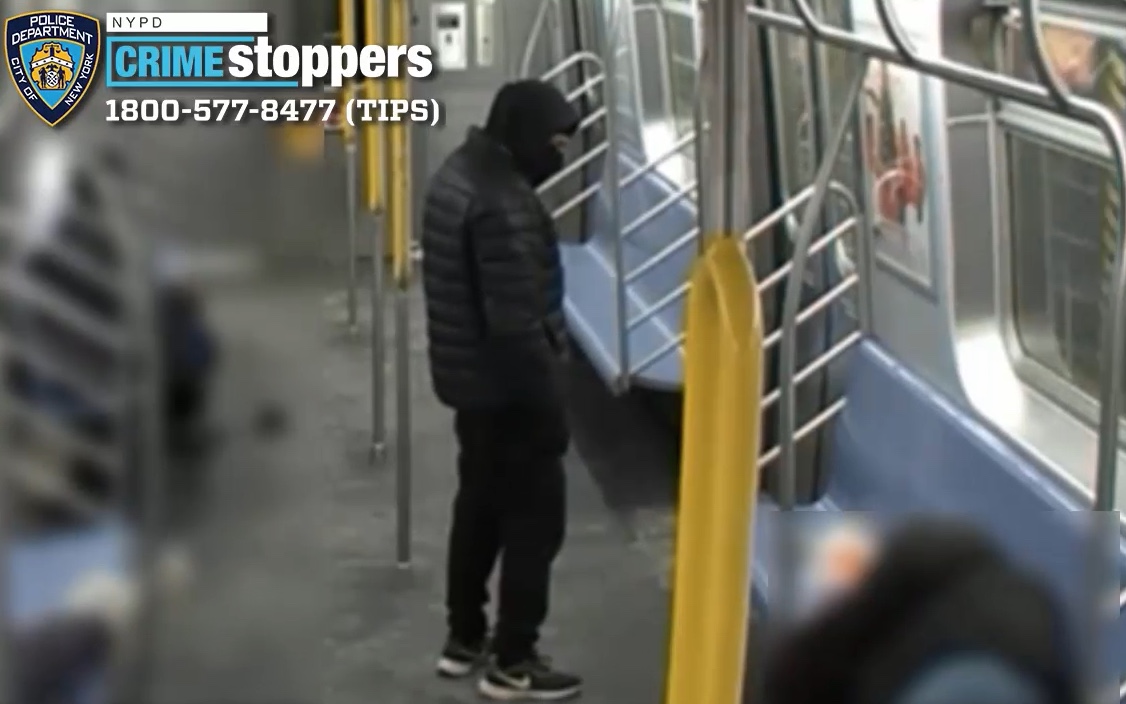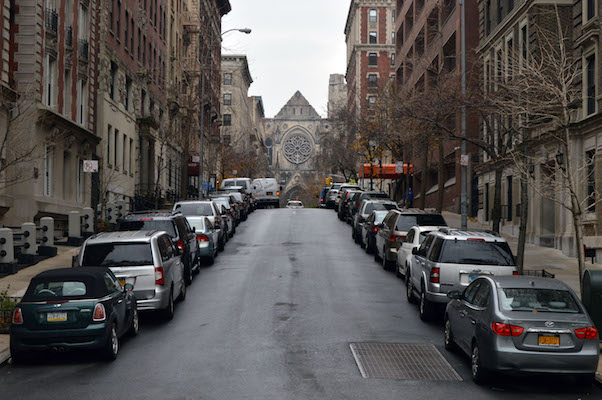
BY JACKSON CHEN | After more than 20 years of advocating for a new historic district at the northern reaches of the Upper West Side, residents and elected officials turned out in force on December 6 to offer support for the creation of the Morningside Heights Historic District during a Landmarks Preservation Commission public hearing.
The borders of the historic district proposed by the LPC form a jigsaw-like chunk within a neighborhood with rough boundaries from West 109th to West 119th Streets and Riverside Drive to Amsterdam Avenue. According to the agency, which calendared the proposal on September 13, the designation would include roughly 115 buildings created between the 1890s and the 1920s.
LPC’s research staff report noted that the area was marked by bursts of residential development after the Interborough Rapid Transit subway arrived in 1904, with lines now known as the 1, 2, and 3 trains. Within the proposed district’s zigzagging borders, two religious institutions, the Broadway Presbyterian Church at 601 West 114th Street and Congregation Ramath Orah at 550 West 110th Street, were included in the designation.
According to West Side Congressmember Jerrold Nadler, the community has called for an historic district in the area for the past two decades, during which time the pace of tall new developments there has accelerated.
“My district is home to many of New York’s most recognizable landmarks, neighborhoods, and buildings,” Nadler said in his testimony. “In order to ensure their continued cultural and aesthetic impact, these sites must be properly preserved.”
Spearheading the efforts at the community level, Laura Friedman, the president of the Morningside Heights Historic District Committee, spoke of the Beaux Arts style throughout the neighborhood that is an integrating force among a diverse array of historic buildings, creating a strong sense of place in the neighborhood.
“People from all over the world come to Morningside Heights, one of the jewels in the crown in our proud city,” Friedman said. “The amazing thing about Morningside Heights is how this neighborhood exists in the current moment on so many historic and architectural levels.”
Several of the area’s other local elected officials also lent their support for the historic district. City Councilmember Mark Levine, whose district includes the proposed district, said Morningside Heights was home to more world-class academic, cultural, religious, and medical institutions than any other neighborhood in America.
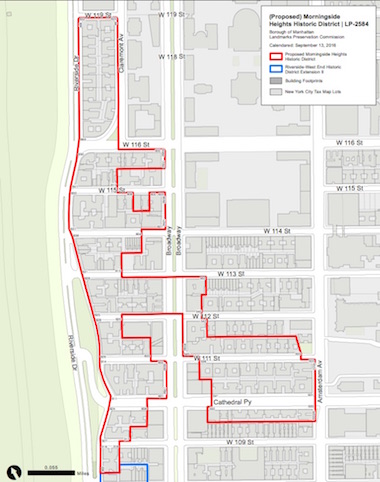
Levine asserted that survival of the neighborhood’s historic elements into the 21st century was an impressive feat that preserves a “unique architectural identity,” but one that is under threat by the significant development pressures nowadays. The councilmember noted there are several historic districts surrounding the proposed Morningside Heights area, making it an “island of vulnerability amidst the better protected areas around us.”
According to Assemblymember Daniel O’Donnell, whose apartment building on West 111th Street would be included in the proposed historic district, his office has received many letters, emails, and phone calls from residents to press for the designation. O’Donnell’s support dates back to the 1990s, when he was a founding member of the Morningside Heights Historic District Committee as well as the Land Use Committee chair at Community Board 9.
“When standing on my block, West 111th Street, one feels an immediate and undeniable sense of unique grandeur and history,” O’Donnell wrote in his testimony.
Like many others, O’Donnell said there are areas deserving of preservation that were excluded from the LPC’s proposal. He called for the agency to think about a second phase of the proposed district.
“With this area already facing a number of imminent threats of significant alteration or demolition, the district is in need of historic designation as soon as possible,” O’Donnell said. “We cannot, and should not, allow the piecemeal destruction of one of the most historic areas in our city.”
However, not everyone on hand was in favor of the creation of the historic district, with the two religious congregations included in its boundaries and a local resident speaking against the proposal.
Both the Broadway Presbyterian Church and Congregation Ramath Orah explained that the restrictions placed on them by being included in the historic district designation would impede much-needed and ongoing repairs they are carrying out. According to Pastor Chris Shelton, Broadway Presbyterian shouldn’t be lumped in with its Beaux Arts neighbors. Underscoring his concerns about moving forward expeditiously with repairs, he pointed to an incident this past summer when a pedestrian was struck by a falling piece of concrete from the church’s façade.
Ilya Schwartzburg, a resident of West 110th Street, also spoke in opposition to the new district, saying that further development would welcome more people into the neighborhood and foster a greater sense of community.
“I personally think that the community would be more dynamic, exciting, and notable once young professionals like me move up there more often with more space,” Schwartzburg said. “Development does not simply mean out-of-place buildings, it means people.”
While Columbia University endorsed the creation of an historic district, it requested that the LPC exclude its properties at 604-616 West 114th Street, arguing that the buildings lacked any distinctive identities and would complicate their future use by the school.
The clear majority of the public at the hearing was in favor of the proposed district, with testimony in support, as well, from representatives of Landmark West!, the Historic Districts Council, and New York Landmarks Conservancy.
“Its sense of place is derived from the confluence of this residential developmental trend paired with that of the development of its institutions, just steps away from one another,” Kelly Carroll, HDC’s director of advocacy and community outreach, said, of the area. “With the exception of two churches, this district focuses entirely on the neighborhood’s residential story, but that story is well worth telling.”




